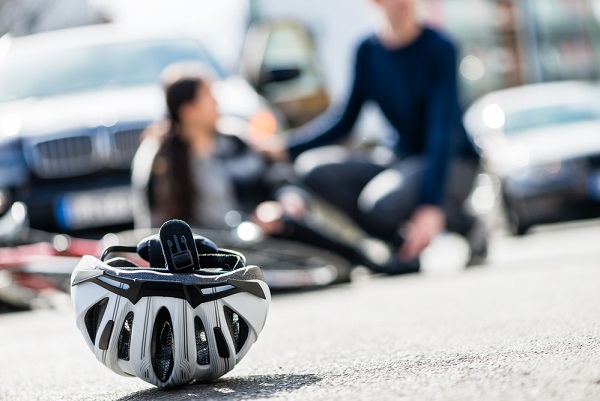
June 6, 2023
Early versions of Subaru’s EyeSight crash avoidance system prevented real-world crashes with bicyclists traveling parallel to the road, a new study from the Insurance Institute for Highway Safety (IIHS) shows.
However, they were only modestly successful in reducing crashes with bicyclists overall. The automaker recently rolled out changes to the system that could make it more effective at recognizing cyclists in the most common crash scenario.
EyeSight is a suite of advanced driver assistance features that includes automatic emergency braking (AEB) and other technologies and is enabled by two cameras mounted behind the windshield. It was one of the earliest crash avoidance systems to be able to prevent bicycle crashes.
The first two generations of the system were designed to detect only bicycles traveling in a parallel path to the vehicle. The system reduced such parallel crashes by 29 percent but had only a minor impact on crashes with bicyclists overall, the IIHS study found.
 “It’s promising that these early versions of EyeSight prevented crashes with bicycles traveling parallel to the road, but to have a meaningful impact, AEB systems also need to be able to prevent crashes with bicycles that are crossing in front of the vehicle,” said Jessica Cicchino, vice president of research at the Institute and the author of the study.
“It’s promising that these early versions of EyeSight prevented crashes with bicycles traveling parallel to the road, but to have a meaningful impact, AEB systems also need to be able to prevent crashes with bicycles that are crossing in front of the vehicle,” said Jessica Cicchino, vice president of research at the Institute and the author of the study.
Previous IIHS research has shown that AEB reduces police-reported rear-end crashes with other motor vehicles by 50 percent. Another study showed systems that can detect pedestrians reduce those crashes by 27 percent — though the early versions didn’t work very well in the dark. AEB designed to avoid bicycles has been slower to take off, even though almost 1,000 bicyclists were killed in motor vehicle crashes in 2021, a more than 50 percent increase since 2010.
To better understand the potential of such systems to protect cyclists, Cicchino compared bicycle crash rates for Subaru models with EyeSight with crash rates for the same models without the system across 16 U.S. states over 2014-2020.
The equipped Crosstrek, Forester, Legacy, Outback, Impreza and WRX models were all outfitted with the first or second version of the EyeSight system, which was designed only to prevent crashes with bicycles traveling in a parallel path to the vehicle.
As expected, the systems were better at preventing the parallel crashes they were designed to avoid than crashes of other types. Rates of police-reported parallel crashes were 29 percent lower for vehicles equipped with EyeSight than for unequipped vehicles. Perpendicular crash rates and overall crash rates were 5 percent and 9 percent lower for equipped vehicles, respectively, but neither of those reductions was statistically significant.
 Past research, including some by IIHS, has shown that crossing crashes account for the majority of bicycle crashes in the U.S. and Europe. Parallel crashes are overrepresented among those in which the bicyclist is killed, but Cicchino cautions that her study doesn’t provide a clear indicator of EyeSight’s ability to prevent those fatal crashes — which feature high speeds and other circumstances that could affect the system’s performance.
Past research, including some by IIHS, has shown that crossing crashes account for the majority of bicycle crashes in the U.S. and Europe. Parallel crashes are overrepresented among those in which the bicyclist is killed, but Cicchino cautions that her study doesn’t provide a clear indicator of EyeSight’s ability to prevent those fatal crashes — which feature high speeds and other circumstances that could affect the system’s performance.
The third generation of EyeSight, which is designed to prevent both crossing and parallel crashes, is already available, though it’s too soon for a study of its real-world effectiveness. Subaru introduced the new version on the 2022 Forester and WRX in the U.S. market. The 2023 Ascent, Legacy and Outback also have the new version, as well as a third camera that expands the system’s field of view. Potentially, that wider scope could allow the system to detect crossing bicyclists sooner.
To make their systems most effective, automakers will need to ensure they can avoid bicyclists in the dark, when risk of a fatal crash is highest, and in other challenging scenarios, Cicchino points out. Even then, policymakers and road designers should think of crash avoidance technology as a failsafe measure, rather than a solution.
“These technologies are fantastic, but it will be a long time before every vehicle in the fleet is equipped with such a system,” Cicchino said. “That’s why we need things like better roadway lighting to help drivers to see cyclists at night as well as more separated bike lanes and other infrastructure improvements that we know reduce crash risk.”




